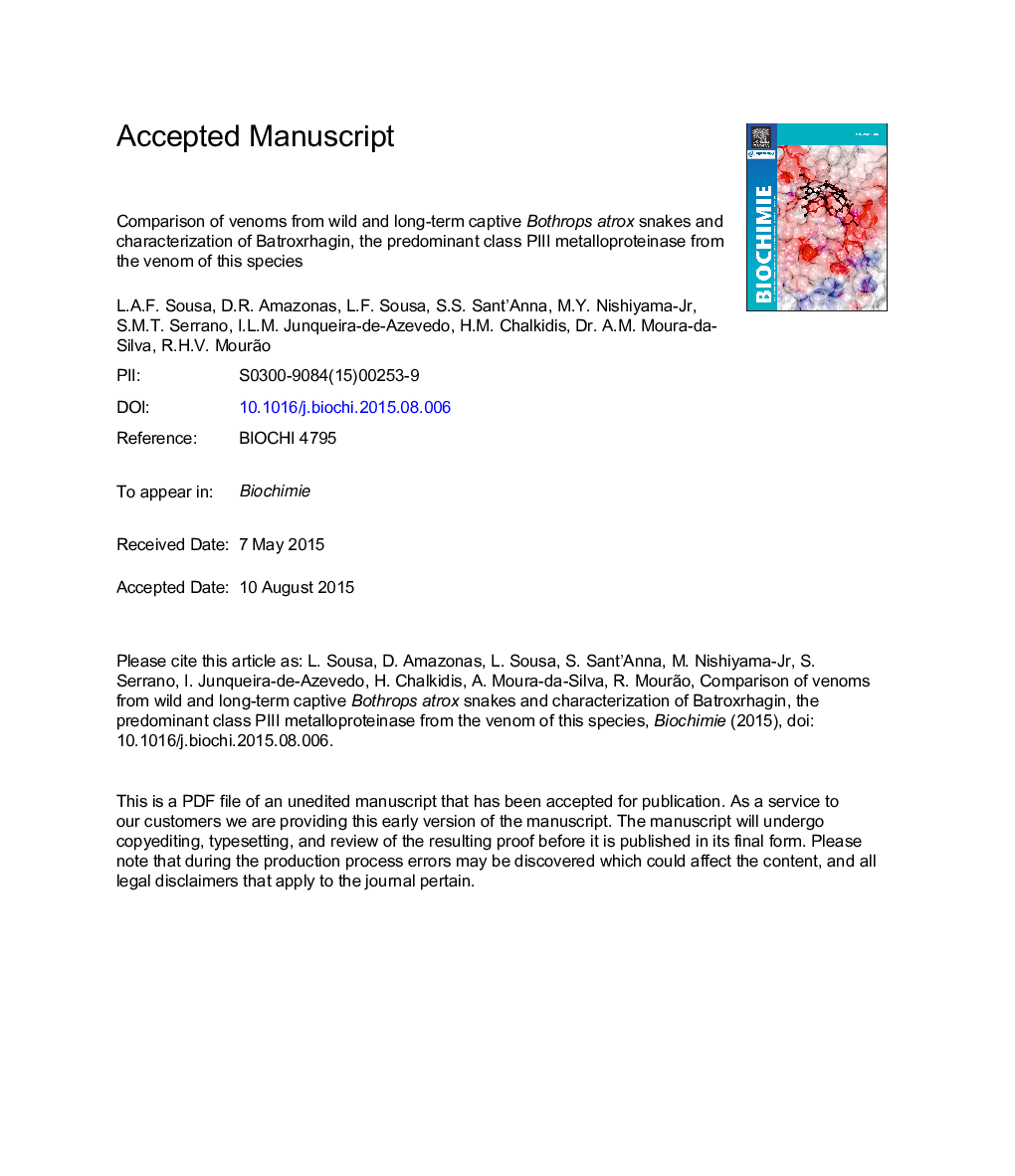| کد مقاله | کد نشریه | سال انتشار | مقاله انگلیسی | نسخه تمام متن |
|---|---|---|---|---|
| 8304758 | 1538413 | 2015 | 29 صفحه PDF | دانلود رایگان |
عنوان انگلیسی مقاله ISI
Comparison of venoms from wild and long-term captive Bothrops atrox snakes and characterization of Batroxrhagin, the predominant class PIII metalloproteinase from the venom of this species
دانلود مقاله + سفارش ترجمه
دانلود مقاله ISI انگلیسی
رایگان برای ایرانیان
کلمات کلیدی
PLA2SVMPSnake venom serine proteinaseSVSPphospholipase A2 - آنزیم فسفولیپاز A2 Venom variability - تنوع زهرHemorrhage - خونریزیSnake venom - زهر مارAntivenom - ضد زهر یا پادزهرMetalloproteinase - متالوپروتئیناز Snake venom metalloproteinase - متالوپروتئیناز زهر مارBothrops atrox - هر دو طرف آتروکس
موضوعات مرتبط
علوم زیستی و بیوفناوری
بیوشیمی، ژنتیک و زیست شناسی مولکولی
زیست شیمی
پیش نمایش صفحه اول مقاله

چکیده انگلیسی
Comparisons between venoms from snakes kept under captivity or collected at the natural environment are of fundamental importance in order to obtain effective antivenoms to treat human victims of snakebites. In this study, we compared composition and biological activities of Bothrops atrox venom from snakes collected at Tapajós National Forest (Pará State, Brazil) or maintained for more than 10 years under captivity at Instituto Butantan herpetarium after have been collected mostly at Maranhão State, Brazil. Venoms from captive or wild snakes were similar except for small quantitative differences detected in peaks correspondent to phospholipases A2 (PLA2), snake venom metalloproteinases (SVMP) class PI and serine proteinases (SVSP), which did not correlate with fibrinolytic and coagulant activities (induced by PI-SVMPs and SVSPs). In both pools, the major toxic component corresponded to PIII-SVMPs, which were isolated and characterized. The characterization by mass spectrometry of both samples identified peptides that matched with a single PIII-SVMP cDNA characterized by transcriptomics, named Batroxrhagin. Sequence alignments show a strong similarity between Batroxrhagin and Jararhagin (96%). Batroxrhagin samples isolated from venoms of wild or captive snakes were not pro-coagulant, but inhibited collagen-induced platelet-aggregation, and induced hemorrhage and fibrin lysis with similar doses. Results suggest that in spite of environmental differences, venom variability was detected only among the less abundant components. In opposition, the most abundant toxin, which is a PIII-SVMP related to the key effects of the venom, is structurally conserved in the venoms. This observation is relevant for explaining the efficacy of antivenoms produced with venoms from captive snakes in human accidents inflicted at distinct natural environments.
ناشر
Database: Elsevier - ScienceDirect (ساینس دایرکت)
Journal: Biochimie - Volume 118, November 2015, Pages 60-70
Journal: Biochimie - Volume 118, November 2015, Pages 60-70
نویسندگان
L.A. Freitas-de-Sousa, D.R. Amazonas, L.F. Sousa, S.S. Sant'Anna, M.Y. Jr., S.M.T. Serrano, I.L.M. Junqueira-de-Azevedo, H.M. Chalkidis, A.M. Moura-da-Silva, R.H.V. Mourão,